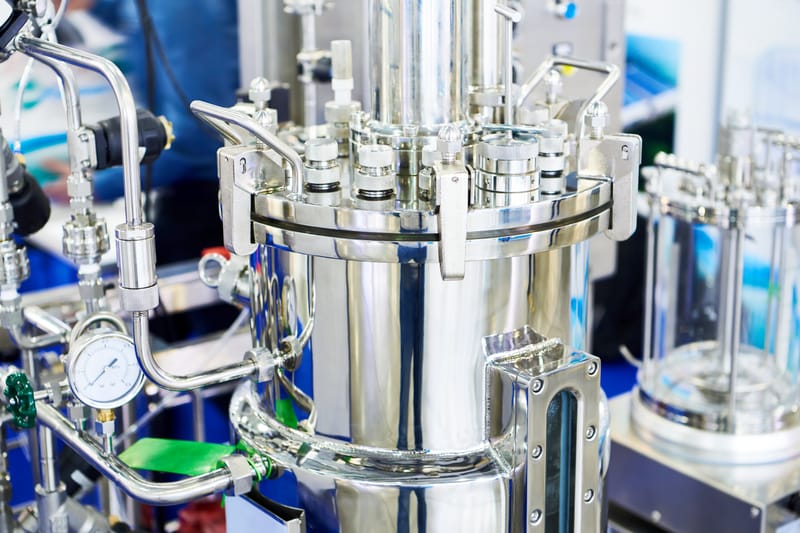Liquefaction and Storage of Gases

The final step in ESCo2's emissions processing system is to liquefy the clean, high-purity gases and store them in cryogenic storage tanks. Here is how this process is implemented:
1. Liquefaction of Clean Gases
- Proprietary Liquefaction Techniques: Depending on the type of gas, specific liquefaction techniques are used. These techniques generally involve cooling the gas to very low temperatures until it transitions into a liquid state. The process may include:
- Pre-Cooling Stages: Using heat exchangers to gradually reduce the gas temperature before final liquefaction.
- Expansion Valves or Joule-Thomson Effect: Leveraging the Joule-Thomson effect, where gas cools upon expansion, to achieve the desired cryogenic temperatures.
- Cryogenic Refrigeration: Using a proprietary refrigeration cycle optimized for energy efficiency and high performance to liquefy gases like nitrogen, oxygen, methane, or carbon dioxide.
2. Cryogenic Storage Tanks
Tank Design: Cryogenic storage tanks are specially designed to maintain ultra-low temperatures and minimize heat transfer. Key features include:
- Vacuum Insulation: Most tanks use double-walled construction with a vacuum layer between the walls to minimize heat leakage.
- Durable Materials: Constructed with materials like stainless steel to withstand extreme cold and prevent brittleness or fractures.
- Pressure Relief Systems: Equipped with safety valves to release excess pressure in case of gas expansion, preventing accidents.
Storage and Handling:
- Automated Pumping Systems: Liquefied gases are pumped into the storage tanks through automated systems that monitor pressure, temperature, and fill levels in real time.
- Temperature Monitoring: Continuous monitoring ensures that the cryogenic storage conditions are maintained to prevent gas vaporization or losses.
- Safety Protocols: Safety measures, such as automatic shut-off systems and emergency venting, are in place to handle any unexpected temperature or pressure fluctuations.
3. Leveraging the Leidenfrost Effect (for Insulation & Safety):
To enhance the insulating properties of the vapor layer to prevent excessive heat transfer (e.g., to reduce unwanted boiling or improve storage efficiency, the Liedenfrost Effect), the following methods are used.
Surface Coatings: hydrophobic coatings or nano-structured surfaces to enhance vapor layer stability, reducing unwanted heat exchange.
Using Leidenfrost for Cryogenic Transport:
- The effect can prevent direct heat transfer between a cryogenic liquid and a container, minimizing boil-off losses.
4. Efficient Use of Energy
- Energy Recovery: Implement energy recovery systems to reclaim and reuse energy lost during the liquefaction process. This could involve using waste heat from compressors or employing efficient refrigeration cycles.
- Optimizing Liquefaction: Proprietary techniques can include methods to reduce energy consumption, such as multi-stage cooling, advanced refrigerants, or optimized flow dynamics.
5. Applications for Liquefied Gases
- On-Site Use or Distribution: The liquefied gases can be used for on-site industrial processes, sold as a product, or transported in cryogenic tanker trucks to customers or distribution hubs.
- Revenue Opportunities: High-purity liquefied gases have significant market value. For instance:
- Liquefied Methane (LNG): Used as a clean fuel or in power generation.
- Liquefied Nitrogen or Oxygen: Widely used in medical, industrial, and scientific applications.
- Liquefied Carbon Dioxide: Used in food and beverage industries, enhanced oil recovery, and other industrial processes.
Advantages of Cryogenic Storage
- Efficient Space Utilization: Liquefying gases reduces their volume significantly, making storage and transportation more efficient.
- Preservation of Purity: Cryogenic storage ensures that the high-purity gases do not degrade or become contaminated over time.
- Scalability: The system can be scaled to match the volume of gases processed, providing flexibility for fluctuating production rates.